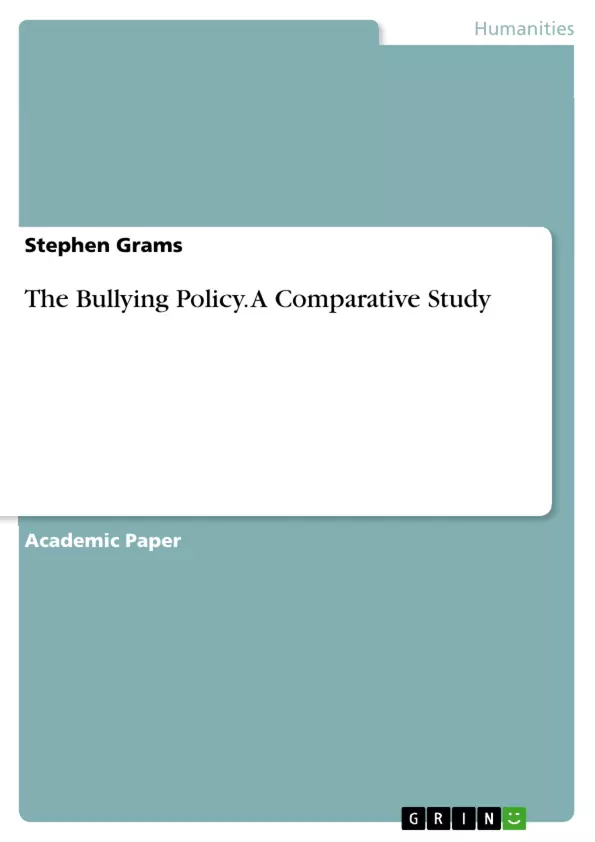The paper was written as the final assignment which was to determine our adeptness at educational policies and concerned the topic of bullying.
Bullying is defined by the Wis. Dept. of Public Instruction as behavior that is aggressive, not wanted, and occurring in conjunction with school age students. Bullying/harassment is caused by non-harmonious perception or realization of power. Bullying is often repetitive and may cause “serious, lasting problems” (A comprehensive approach to bullying prevention, Retrieved from: https://dpi.wi.gov/sspw/safe-schools/bullying-prevention). “These behaviors are normative occurrences in schools, they are not considered socially acceptable in the context of democratic societies” (United Nations, 1989). I posit, bullying/harassment, may occur as a result of the intent to control another person’s behavior, attitudes, beliefs, and culture in general, for the acquisition of resources and the resultant power to achieve a goal that is not entirely ethical.
Inhaltsverzeichnis (Table of Contents)
- Introduction
- Wisconsin's model bullying policy
- Policy language
- Procedural steps and reporting components
Zielsetzung und Themenschwerpunkte (Objectives and Key Themes)
This paper explores the similarities and differences between bullying policies in the Middleton High School (MHS) district and the Walton County School District (WCSD) in Florida. The goal is to provide a comparative analysis of the policy language, procedural steps, and reporting components of each district, highlighting any key differences and potential areas for improvement.
- Defining and understanding bullying
- Analyzing the impact of bullying on the school environment
- Examining the procedural steps for reporting and investigating bullying
- Comparing policy language and its effectiveness in preventing bullying
- Exploring the role of state statutes and laws in shaping bullying policies
Zusammenfassung der Kapitel (Chapter Summaries)
- Introduction: This section provides a definition of bullying, highlighting its impact on students and the need for effective policies. It also explores the author's personal experience with bullying, suggesting a connection between power imbalances and aggressive behavior.
- Wisconsin's model bullying policy: This chapter examines the development of Wisconsin's bullying policy, tracing its evolution from the initial focus on in-school bullying to the inclusion of cyberbullying. It also describes key components of the model policy, including definitions, reporting procedures, investigations, and consequences.
- Policy language: This section compares the bullying policies of MHS and WCSD, highlighting similarities and differences in their language and definitions. It focuses particularly on the definition of "environment" in each policy and the author's interpretation of its significance.
- Procedural steps and reporting components: This chapter compares the procedures for reporting bullying incidents in MHS and WCSD, examining similarities and differences in their online reporting systems, telephone hotlines, and the number of possible bullying scenarios they address.
Schlüsselwörter (Keywords)
The central focus of this analysis is on bullying policies, their language, and their effectiveness in preventing and addressing bullying behavior. Key themes explored include power dynamics, school environment, reporting procedures, legal implications, and state statutes. This study examines the impact of different policy frameworks and their implications for students, teachers, and school administrators.
- Quote paper
- Stephen Grams (Author), 2019, The Bullying Policy. A Comparative Study, Munich, GRIN Verlag, https://www.grin.com/document/454950



